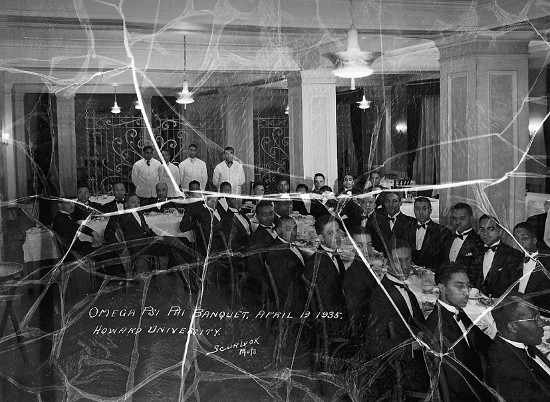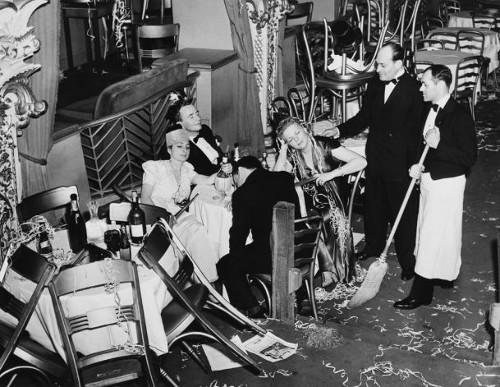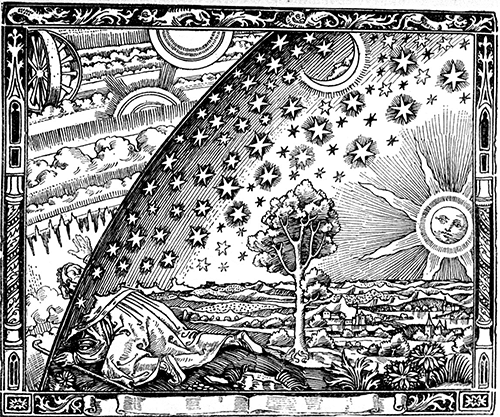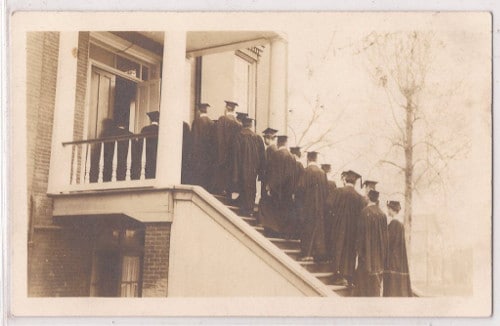
In advance of a series of articles we’ll be doing this year on some of the rites that have been central to manhood, we have recently been discussing the nature of ritual and its several benefits.
In the last post, we explored ritual’s power to carve out pockets of the sacred in an otherwise profane world. Ritual has the ability to sacralize not only time and space, but the bonds between people as well. In fact, ritual is primarily group-oriented in nature (private rituals generally derive from once public varieties) and has been called “the social act.” As the authors of Ritual and Its Consequences, Adam B. Seligman, Robert P. Weller, and Michael J. Puett (who I’ll simply refer to hereafter as SWP), argue, ritual “involves the endless work of building, refining, and rebuilding webs of relationships in an otherwise fragmented world.” It is uniquely effective at meditating social interactions and building community, and performs this work in several ways:
Rituals foster a group’s culture and identity. Rituals have the ability to both unify and divide. They are one of the key things that create a group’s culture and distinguish one community from another. A belief in the superiority of your tribe’s rituals is part of the pride and esprit de corps so essential to true honor groups.
Rituals are one of the defining features of “closed” groups as they not only separate one tribe from another, but also create intra-group boundaries that define who is in and who is out. Not so great for the guy who doesn’t make the cut, but it allows the successful initiate to become fully integrated in the group, rather than feeling like an awkward hanger-on. Full integration gives the initiate security in his identity, a clear set of expectations of how to act if he wishes to maintain his membership, and the motivation to strive that comes from knowing one’s purpose.
If the group’s rites were especially strenuous – for example those undergone in basic training and combat — group members are bonded by a mutual respect born of the knowledge that they have done and seen things others will never understand. A challenging initiation also separates the wheat from the chaff, ensuring that those members who do make it through really want to be in and are up to snuff.
Rituals create an atmosphere of trust. Rituals build bonds of trust between group members, as they frequently require a public declaration of an inner commitment. Group members know they are all on the same page and don’t need to start from scratch in ascertaining each other’s values and mentality – even if they meet as strangers.
Rituals prevent and mediate interpersonal conflicts. Rituals of communication and etiquette create guidelines for how to act towards others and how to expect others to act towards you. In this way, they smooth and facilitate interactions and prevent misunderstandings.
This function was especially important in traditional honor cultures, where a perceived slight could lead to challenges and bloodshed. Rituals kept behavior in check that might offend or insult, and if an altercation did still occur, they mediated a solution that would satisfy both parties, often without resorting to violence. Duels of the 19th century, for example, were not spontaneous affairs in which an insult was given and the parties marched immediately outside to do battle (in fact, striking another gentleman made you a social pariah). Instead, a duel had to be conducted calmly and coolly to be dignified, and the preliminaries could take weeks or months; a letter requesting an apology would be sent, more letters would be exchanged, and only if a peaceful resolution could not be reached would plans for the duel actually commence. Even then, only 20% of these “affairs of honor” ended in a fatality; each side would deliberately miss or intentionally aim for a non-critical wound.
Ritualistic combat to resolve problems may seem barbaric to us today, but its advocates at the time believed it actually reduced violence. Instead of a conflict pulling in each party’s associates, and turning an issue that was originally between just two men into an endlessly bloody feud between groups and families (a la the Hatfields and McCoys), a mano-a-mano showdown nipped the problem in the bud and provided a clear resolution to all parties.
Though the ritual of dueling died out, no alternative rituals outside the legal system emerged to replace it. And this has brought its own set of problems. As Carlin Barton, author of Roman Honor, argues:
“The absence of sufficient and powerful ‘given’ rituals makes it hard, in contemporary American culture, not to be overwhelmed by the intensity of one’s emotions or to respond to even slight challenges with anything but expletives. The formalized behaviors that would mediate between violence and passivity are lacking in our culture. We respond to humiliation by shooting one another or by watching television.”
Rituals smooth and facilitate social interactions. A lack of shared social rituals leads not simply to violence (or submerged, unresolved rage), but simple awkwardness. As Barton observes of the late period of one classical culture:
“The lack of reliable rules and shared unconscious assumptions often hobbled speech and action. And so immobility and stupor are as frequently depicted as violence in the literature of the great heterogeneous Roman Empire.”
Today, though getting rid of some of the “stuffy” rules of etiquette was supposed to be liberating, interactions can often be bumbling and artless, as nobody is sure what they are supposed to do. “Who picks up the check…oh, looks like we’re both reaching for it.” “Is someone going to introduce me…I guess not. I’ll just stand here awkwardly.” “Ooh, I guess that’s not a subject I should have brought up.”
If you think of any sport, its rules serve to facilitate the action. Without them, or if every player followed their own rules, the game would devolve into chaos, lack its aesthetic rhythm and flow, and lose all meaning. Once the athletes know the parameters they are working with, they can concentrate on performing the permissible behaviors at their very best. In the same way, while social rituals may seem restrictive, they can actually create pathways or channels through which behavior can flow more freely.
Rituals can produce “collective effervescence.” While belonging to a tribe or community requires a member to subordinate some of his individuality, participation in the group’s rituals allows him to experience an atmosphere and energy he would not have been able to create by himself. Sociologist Emile Durkheim wrote of this potentiality:
“Within a crowd moved by a common passion, we become susceptible to feelings and actions of which we are incapable on our own. And when the crowd is dissolved, when we find ourselves alone again and fall back to our usual level, we can measure how far we were raised above ourselves.”
Durkheim called this common passion “collective effervescence” — a special energy that can transfigure an event into something electric, transcendent, even sacred. Collective effervescence can occur at sports events, religious services, political rallies, music festivals – anywhere a group of people are engaged together in a ritual. Durkheim described the experience of collective effervescence as being “transported into a special world entirely different than the ordinary, a setting populated by especially intense forces that invade and transform.” These forces engender feelings of invincibility and the sense that anything is possible.
Think of being at a concert where there was a moment that seemed shot through with a special electric energy – the air was charged and your heart seemed to swell. The moment was brought into being by the audience and performers as a whole – each individual contributed to intensifying the shared mood — and so you felt a sense of unity and warm connection with everyone there – a collective identity. Together you created a moment that was able to transcend the everyday.
It can be argued that the ability to create is our most god-like attribute, and for this reason ritual has the potential to not only solidify bonds, but also sacralize them. Powerful is the bond between those who stand together as co-creators. The sacralization of relationships is thus most likely to occur at gatherings that are less consumeristic and have a greater purpose – moral, religious, civic, revolutionary, or heroic.
Obviously, collective effervescence has a dark side – people may lose their inhibitions, become overly emotional, and suspend their critical thinking, creating a mob mentality that can spill over into aimless violence and chaos. Think of the protests in Egypt over the last few years – they could be both powerful and effective, but also frequently destructive.
Yet it would be a shame to throw out the baby with the bathwater when it comes to meaningful communal gatherings. As sociologist Alex Law argues, collective effervescence “allows society to recharge its batteries” and “reaffirm its moral unity.”
Ritual gatherings are even a conduit through which we may generate solutions to societal problems that would not have emerged any other way. Durkheim himself predicted that:
“A day will come when our societies will once again experience times of creative effervescence and new ideas will surge up, new formulas will arise to serve to guide humanity for a time.”
Rituals create a shared world. If creativity and ritual seem like a contradiction, it is because rituals often get an unfair rap as universally mindless and conformist. In fact, rituals are a great font of the imagination.
How so? A non-ritualized culture prizes “authenticity” above all, and insists on dealing with reality just as it “really is” (although in practice that usually means uncritically dismissing life’s ambiguities and cynically concentrating on its most negative aspects). In contrast, ritual has the potential to create a temporary shared world between participants – another universe or dimension within our present reality. SWP argue that this shared world constitutes a third space that allows us to imagine and explore other possibilities for our lives, roles, and culture. As opposed to seeing things only “as-is,” ritual creates a shared “as-if,” a shared “could-be.”
Celebrating the Eucharist creates a shared world in which it is as if the Last Supper is happening once again. Performing a war dance before battle creates a shared world in which a tribe could be the fiercest fighting force in the land. Drumming a cadet out of VMI creates a shared world in which it is as if honor in the most precious thing in a soldier’s life. Initiating a fraternity member creates a shared world in which brotherhood could be an unbreakable bond. Tying the knot creates a shared world in which it is as if the marriage is guaranteed to last forever.
But, you ask, aren’t these shared worlds merely illusions? Aren’t they just a false reality we’re creating for ourselves? This is true, but rituals can help turn the illusion into reality. Or as SWP put it, “the frame actually pulls us in after it.” The ritual not only points to the ideal, but serves as an actual, lived example of it, and in so doing helps bring it to pass. If you act as if brotherhood is an unbreakable bond, your friendships become stronger. If you act as if your tribe is practically invincible, you will fight more fiercely. This is the act-to-become principle we have talked about before in regards to both manhood and charisma, and will touch on in the next post as well.
It’s important to remember that one of the key elements of ritual is repetition. Obviously a magical wedding ceremony does not actually ensure a lifetime of happiness, but regularly engaging in rituals of affection from that day forward can continually return the couple to that shared world of strong romantic love long after the honeymoon period has faded. As SWP write:
“After three decades of marriage, kids, laundry, mortgages, funerals, fights, and in-laws, the relationship tends to be sustained by a shared “as if” rather than a continued “as is.” Relationships that fail to construct a shared subjunctive over the long term tend to fall apart. It is not enough to love each other sincerely if people fail to act as if they love each other; and acting as if they love each other includes ritualized forms of expressing concern, verbally and in concrete deeds of helpfulness.”
The shared world — the shared reality that ritual creates — SWP argue, ultimately finds its power in allowing “the projection of a shared future through stories of a common past.”
Conclusion
At the beginning of this series, we suggested that ritual can act as an antidote to a modern world that often feels flat, untextured, one-dimensional. One way it does this is by creating layers of the sacred in an otherwise wholly profane world. Today we have explored a second way: ritual participants can together create a shared world – a different dimension that transcends the everyday. As SWP put it, ritual “builds a world that, for brief moments, creates pockets of order, pockets of joy, pockets of inspiration.” Within these pockets, we can play with ideas of what could be, form the kind of bond only open to co-creators, and explore truths and ways of being that repudiate the paltry, pessimistic, lowest-common-denominator options that constitute the current status quo. When we wonder, “Is this all there is?” ritual pulls back the curtain on another world of possibilities, and at the same time, helps turn those possibilities into reality.
Rituals cannot only transform the worlds we share with others, but our own personal world as well – helping us transition and progress through life. To this final power of ritual, we will turn next time.
Listen to our podcast with William Ayot on a man’s need for ritual:
Read the Entire Series:
The Rites of Manhood: Man’s Need for Ritual
The Power of Ritual: The Creation of Sacred Time and Space in a Profane World
The Power of Ritual: Building Shared Worlds and Bonds That Transcend the Everyday
The Power of Ritual: The Rocket Booster of Personal Change, Transformation, and Progress
The Nature and Power of Ritual Series Conclusion: On Ritual Resistance
____________
Sources:
Ritual: Perspectives and Dimensions by Catherine Bell
Liberating Rites: Understanding the Transformative Power of Ritual by Tom F. Driver
Ritual and Its Consequences: An Essay on the Limits of Sincerity by Adam B. Seligman, Robert P. Weller, and Michael J. Puett
Key Concepts in Classical Social Theory by Alex Law







